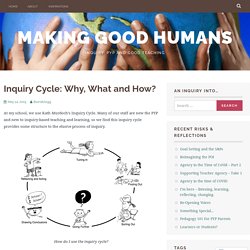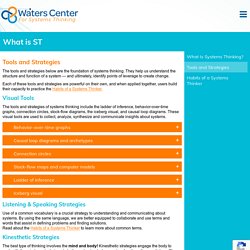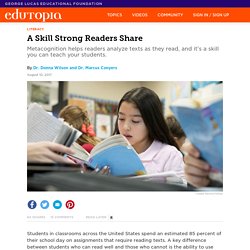

Youtube. Principles of Insruction Rosenshine. Inquiry Cycle: Why, What and How? At my school, we use Kath Murdoch’s Inquiry Cycle.

Many of our staff are new the PYP and new to inquiry-based teaching and learning, so we find this inquiry cycle provides some structure to the elusive process of inquiry. How do I use the inquiry cycle? What do the different stages of the process look like? These are common questions we get from our first and second year teachers as they try to make sense of the inquiry cycle. I came across this graphic which outlines some guiding questions for each phase of the cycle.
Sometimes I find we overthink the process of planning for inquiry – when really it is just the natural stages of human curiosity! There is also a great blog post written by Kath Murdoch entitled Busting Myths About the Inquiry Cycle which may help to deepen your understanding of the benefits and limitations of using such a cycle in the classroom.
Let me know what you think! Like this: Like Loading... 6 Ed Tech Tools to Try in 2021. Q Suite Resources - Monash Education. We use cookies to improve your experience with Monash.

For an optimal experience, we recommend you enable all cookies; alternatively, you can customise which cookies you’re happy for us to use. You may withdraw your consent at any time. To learn more, view our Website Terms and Conditions and Data Protection and Privacy Procedure. Essential functionality (required) Modern websites require cookies to enable essential functionality. Read more Preferences & personalisation We analyse your activity to constantly improve your experience. Writing skills. OWL. Learning.blogs.nytimes. Video and a related lesson plan from TEDEd. Update: Please also see our new, 2017 lesson, Evaluating Sources in a ‘Post-Truth’ World: Ideas for Teaching and Learning About Fake News _________ How do you know if something you read is true? Why should you care?
We pose these questions this week in honor of News Engagement Day on Oct. 6, and try to answer them with resources from The Times as well as from Edutopia, the Center for News Literacy, TEDEd and the NewseumEd. Although we doubt we need to convince teachers that this skill is important, we like the way Peter Adams from the News Literacy Project frames it in a post for Edutopia. As he points out, every teacher is familiar with “digital natives” and the way they seem to have been born with the ability to use technology.
Below, a roundup of tools, questions, activities and case studies we hope can help reduce this digital naïveté. Getting Started: What is News Literacy and Why Do You Need It? Video and a related lesson plan from TEDEd. 2. Waters Center Systems Thinking Tools and Strategies. The tools and strategies below are the foundation of systems thinking.

They help us understand the structure and function of a system — and ultimately, identify points of leverage to create change. Each of these tools and strategies are powerful on their own, and when applied together, users build their capacity to practice the Habits of a Systems Thinker. Visual Tools The tools and strategies of systems thinking include the ladder of inference, behavior-over-time graphs, connection circles, stock-flow diagrams, the iceberg visual, and causal loop diagrams. These visual tools are used to collect, analyze, synthesize and communicate insights about systems. Behavior-over-time graphs Behavior-over-time graphs show how variables change over time. Causal loop diagrams and archetypes Causal loop diagrams show causal relationships and circular feedback.
Connection circles Connection circles are mapping tools used to identify cause-effect relationships in a system. Tom Nichols, "The Death Of Expertise" A Skill Strong Readers Share. Students in classrooms across the United States spend an estimated 85 percent of their school day on assignments that require reading texts.

A key difference between students who can read well and those who cannot is the ability to use metacognition. Metacognition can be regarded as a conversation readers have with themselves about what they are reading. Metacognitive readers enjoy reading because they can find meaning in texts and think deeply to comprehend what they’re reading. Those who have not yet learned to be metacognitive often have trouble reading fluently and comprehending what they read.
Virtually all students can learn how to become metacognitive readers when they are explicitly taught. Before Reading We consider the prereading stage to be of critical importance. Allow students to select their reading material whenever possible. When students have made their selections, facilitate a class discussion around questions like these: While Reading Rereading Summarizing Evaluating. Web Tools and Apps. Research Tools. Approaches to Learning Research Skills.